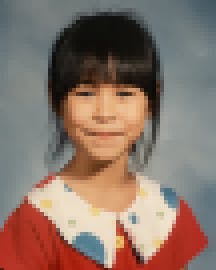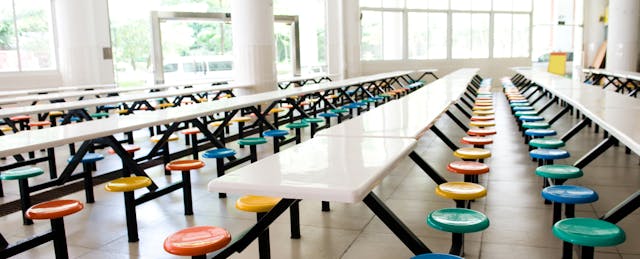
I didn’t know I was biracial when I was a kid, but I knew I was different. I grew up on the coast of South Carolina with church steeples on the horizon and Spanish moss hanging from large live oak trees. I wasn’t your typical Southern girl. My father is white and an American G.I. who met my Korean mother while stationed overseas. I didn’t fit in with the white kids, the black kids or even the Asian kids because I wasn’t Asian enough. My peers didn’t know how to categorize me, and I didn’t know how to categorize myself. My parents didn’t have the tools necessary to help a half-Korean girl navigate school and life.
Over the course of middle school and high school, I met a few other biracial kids like me. Looking back, I can tell we were all just trying to blend in; you never want to draw too much attention to yourself as an adolescent, otherwise you’ll be labeled strange. Eventually, I figured it out despite the scrapes and bruises on my heart along the way, but I also wish I had an adult in my life who could help me navigate what I was experiencing.
It’s only in the past few years that I have been able to unpack my identity as a biracial person. The internet and social media have given me opportunities to read the stories of other multiethnic and multiracial people that resonated with me. There are memes that describe our day-to-day experiences such as being asked by a complete stranger, “What are you?” and “Where are you really from?”
Being a secondary language arts teacher for six years now, I have noticed an increase in the multiracial and multiethnic student population. I wondered if some of these students in our school were going through what I went through as a teenager. I wondered if I could be a resource and support for them on those days when they aren’t sure where exactly they fit in when it comes to their identity. Could I be the teacher that I needed when I was in school?
So, one day, I took a leap and organized a lunch discussion in my classroom for high school students to discuss multiracial and multiethnic experiences. I made digital fliers for the monitors in our hallways and personally invited some of my students. I wasn’t sure anyone would show up, but to my surprise, over 20 students arrived with lunches and friends in tow.
Setting a Table for Us
I kicked off the discussion by sharing my experience as a biracial woman. I mentioned the time in third grade when an ESOL teacher saw me in the hallway and decided I should take an English proficiency assessment, even though English is my first and only language. I shared with them the teasing I endured, like when my classmates made fun of my hairy arms and said Asian girls aren’t supposed to be hairy. I told them about how hard it was to be expected to visually fit in with a particular group of people but I couldn’t even though my white and Black peers did it every day. I said, “I don’t know if it’s still like this today or if any of you even go through this, but I wanted to share my experience with you just in case. I don’t want any of you to feel like you’re the only one who feels out of place sometimes.”
Then, I opened up the floor for students to share their experiences. A few biracial Black students expressed the pressure to be “Black enough,” not just with their friends but also with their family members. A student said family gatherings can be stressful because her Black relatives will call her “white-washed.” A multiethnic student shared how uncomfortable it makes her when people, especially adult men, call her “exotic.” Several female students in the room nodded in agreement at this.
A white-passing student in the group expressed his hesitance in speaking Spanish and claiming his heritage because he didn’t want to be accused of appropriation. Several students expressed feeling shame for not being able to speak or understand their family’s native language. After students shared their challenges, I said, “Even though the people in this room are so different from one another, we have the shared experience of feeling out of place. I wonder, what strengths do we share as multiracial and multiethnic people?”
The students’ responses came quickly. “We are sensitive to other people’s experiences,” said one student. “We are open to the ideas of different cultures,” said another. “We’re unique,” one student said proudly, which prompted smiles and giggles throughout the room. Just moments before, we felt the burden of our experiences as multiracial and multiethnic people, but now I felt the energy shift. We felt good. We felt safe. And we were together.
Fostering a Caring Community
I asked the group if we would like to meet again in the future. There was a resounding “yes” so I put it on the calendar. Since then, we have met every other month over the course of this school year. Each time, we discussed topics such as self-care and recognizing we don’t have to choose a side of ourselves. Together, we decide what the topic of our next discussion will be and I prepare reflection questions for us to consider for the next meeting.
When I facilitate these discussions, I’m not using a blueprint or guide; I like to think of it as an informal gathering of people who take the conversation where it needs to go. I make a point of being the adult in the room who helps students think through their experiences and situations to ensure safety and acceptance. When planning these events, I think back to myself as a teenager and ask her what she would need. The students fill in the rest.
We’ve had leaders from the school district attend our meetings not only to observe but to share their experiences as multiracial and multiethnic people. I am ecstatic that the students are hearing from other adults who are navigating how to move and be in the world. I received emails from these visitors who thanked me for creating a safe space, not just for the students but for them, wishing they had a teacher growing up who could have provided them with this opportunity.
Hosting these discussions has not only helped me grow professionally but it has also brought some healing to my inner child. The one time I ever felt seen in school was when I had an Asian preschool teacher. The next time I felt seen in school was in that first lunch meeting with multiracial and multiethnic students. Listening to students talk about their experiences is an exercise in social-emotional learning, not only for them but also for me. It provides opportunities to unify in a common experience but also compels us to consider other perspectives when the nuances of our identities reveal complexity.
What brings me the most joy is when we see each other in the hallway between classes or in the cafeteria. I love that we know each other’s names and that we can check in with one another throughout the week. There is something so encouraging about knowing there is someone else who understands what you experience and that, no matter what, you know you have someone to sit with at lunch.
Teachers have an amazing opportunity to tap into aspects of their identities in ways that can help students affirm theirs. I encourage you to reflect on your inner child and ask yourself: what kind of teacher did you need and how are you uniquely suited to be that teacher? This act of self-care can become a form of community care as you create space for your students’ well-being.


